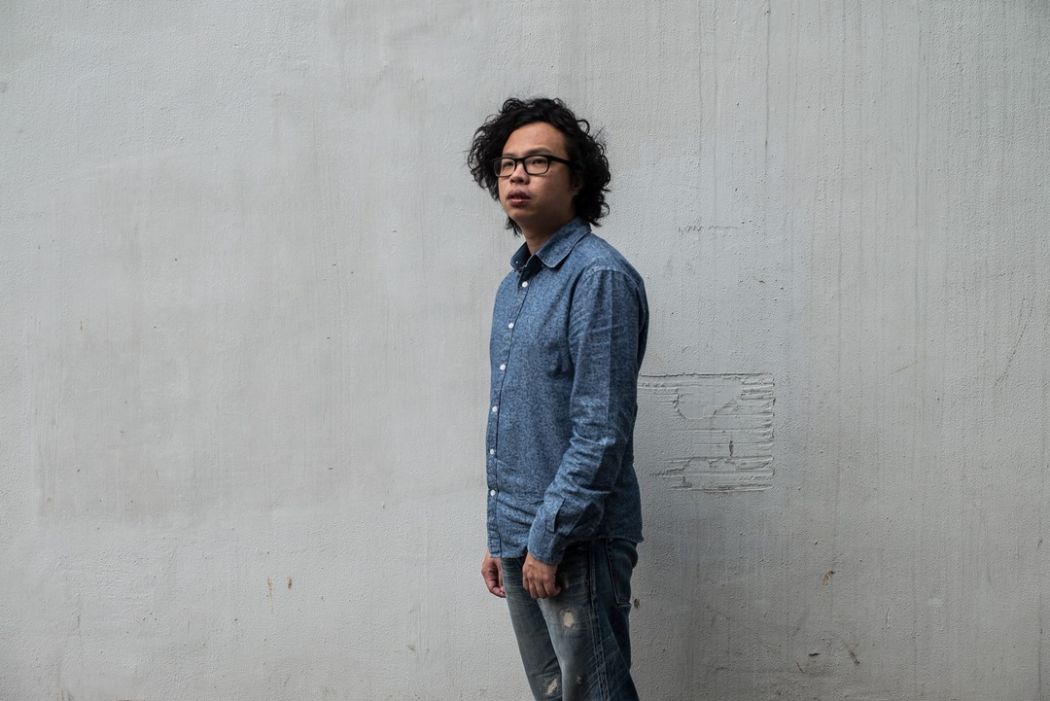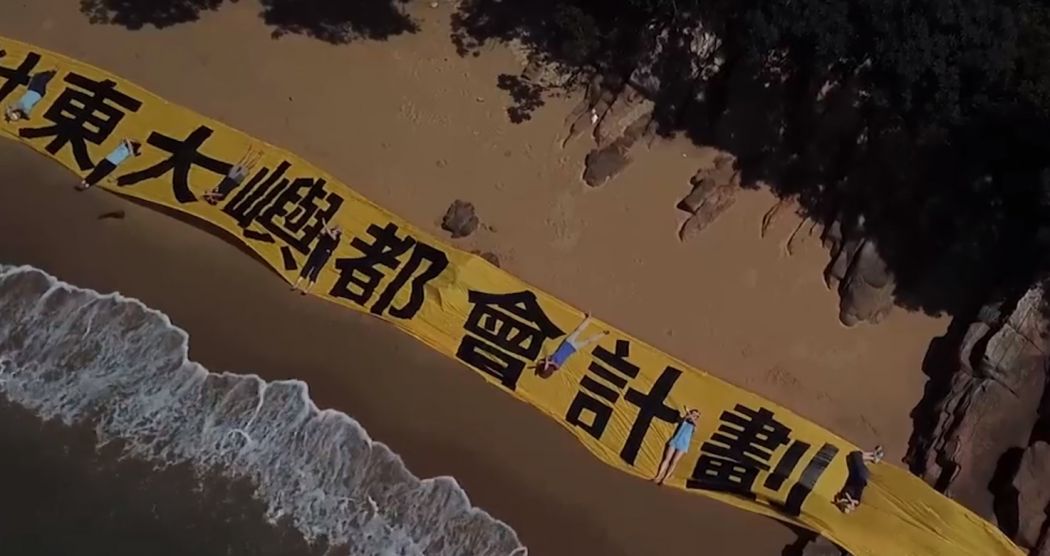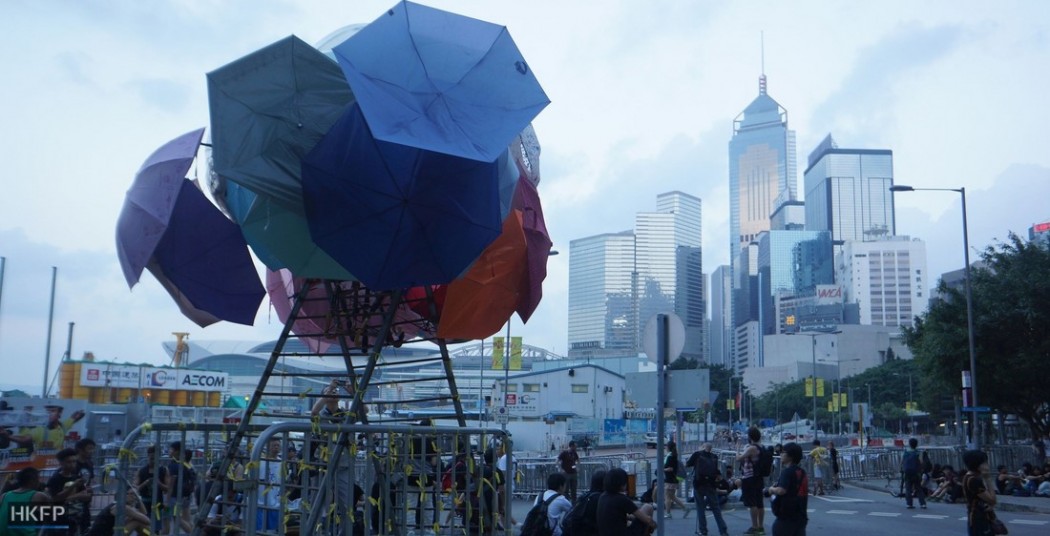Sampson Wong has a knack for finding dramatic places to display his art: he once used the side of the city’s tallest skyscraper as a canvas and – in 2014 – he made use of the wall of the government headquarters whilst thousands of Hongkongers outside clamoured for democracy.
These days, however, a humble storefront or a public square would be good enough for him. “What I find interesting now are community spaces… spaces where people can actually create something new,” he told HKFP.

Wong – an artist who explores the politics of urban spaces – is perhaps best known for his 2016 stunt “Countdown Machine,” where he transformed the International Commerce Centre in West Kowloon into a timer that counted down to July 1, 2047 – the expiry date of China’s promise to let Hong Kong keep its way of life.
He first gained prominence during the 2014 Umbrella Movement, when he and his colleagues gathered online comments expressing support for the protests and projected them onto the facade of the government complex in Admiralty. When the occupy protest camps were cleared, Wong helped preserve artwork made by demonstrators in the Umbrella Movement Visual Archive.
What has happened in Hong Kong since then was not at all reassuring for Wong, to say the least. He said the political situation in the city – particularly for free expression – has reached a low point.
“Not just for the art world, but the whole of Hong Kong in 2018 has been deteriorating,” he said. “A lot of people are intimidated by the so-called red lines.”

Wong cited the example of RTHK docudrama “Below the Lion Rock,” where a recent episode dramatised the experiences of abducted bookseller Lam Wing-kee. In 2015, Lam was detained in the mainland for selling “illegal” books and held for eight months, before returning to Hong Kong and exposing the incident.
“People would actually be surprised that the drama aired… but I agree with what the [episode’s] director said: an artist should not be thinking about political repercussions while creating work,” he said.
An increasing climate of censorship affected how people thought, Wong said, especially when the government’s decision-making was veiled in secrecy so that no one could tell if incidents were political or innocuous. That, in turn, led to people second-guessing themselves.
Finding space for expression
According to Wong, Hong Kong’s visual artists are generally not a politicised bunch: while filmmakers might tackle social issues head-on, in the visual art space, few would address hot-button issues like Hong Kong independence.

“There is a greater polarisation in the art world, between commercial art – which tends to be more abstract – and public art,” he said.
Wong said that he never really took the commercial path, instead he gravitated towards artists like Pak Sheung Chuen and Kacey Wong, who depict and dissect social movements in their work.
While sometimes shunned from Hong Kong’s mainstream art scene, all is not lost for “public artists” like Wong. Following on from his experiments with urban locales, Wong said he was recently fascinated by the potential of community spaces.
“There is not really a scholarly definition for it. It is a bit like the concept of an ‘artist-led space’ but many examples in Hong Kong are not run by artists,” he said. “It is just about finding a spot for the community to interact and be creative.”
One example was the Halloween event organised by volunteer group Fixing Hong Kong. On Wednesday, the group transformed a To Kwa Wan storefront into a haunted house, but with a twist – it was populated by the horrors of Hong Kong society, like a diabolical MTR.

Another example was the massive yellow banner that protested Chief Executive Carrie Lam’s plans for reclamation off the coast of Lantau Island. It was taken to protest marches, laid out on beaches and displayed from the side of a bridge.
“They were able to do something creative for the neighbourhood, and at the same time talk about politics,” Wong said.
Wong acknowledged that such spaces in Hong Kong are under constant threat, especially privately owned spaces designated for public use – like the Times Square piazza, which no longer welcomes buskers. Rent is a problem, not to mention that landlords are becoming increasingly nervous.
Nevertheless, Wong said that he was optimistic about the future of community spaces in Hong Kong. They may not achieve any short-term political goals, but then again, they don’t need to.

“Some groups may say they want to win District Council elections, but most [community space organisers] are okay with just strengthening civil society,” Wong said.
“Strengthening civil society is important. The Umbrella Movement used up 10 years’ worth of energy from Hongkongers… and maybe these community spaces are in a way rebuilding that capacity.”
